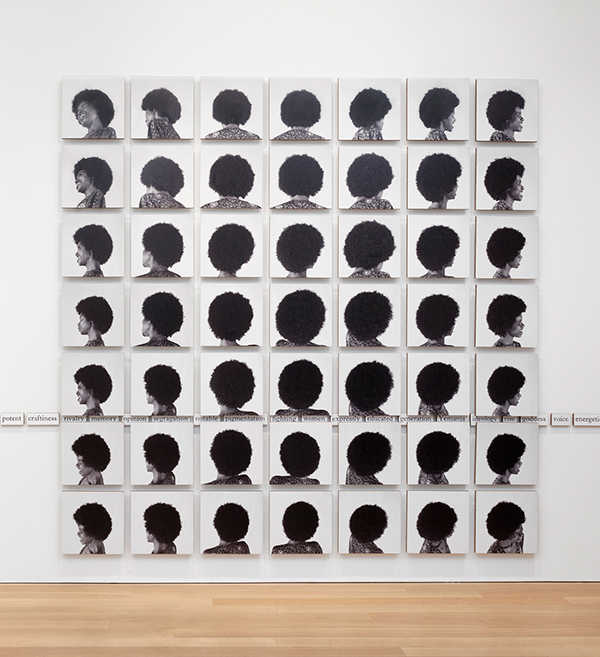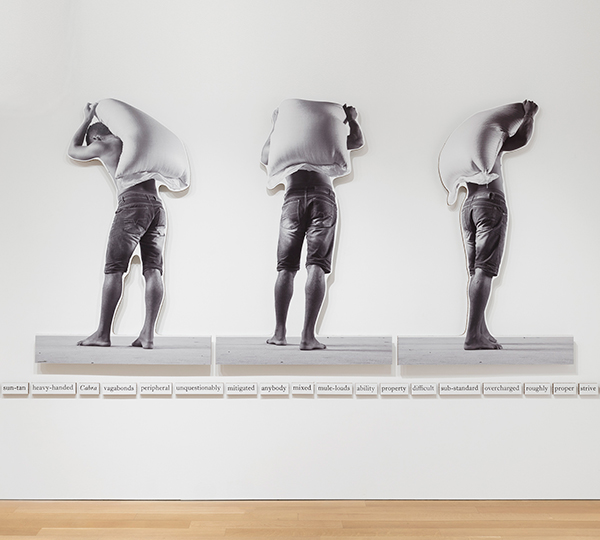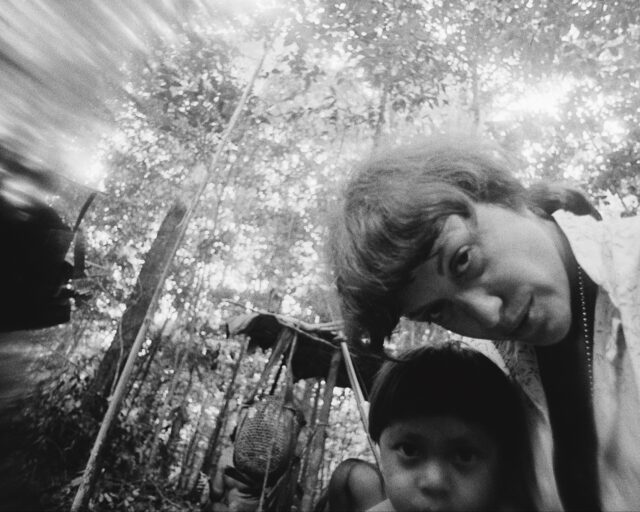The Myth of Brazil's Racial Democracy

Jonathas de Andrade, Eu, mestiço, 2017–18
Courtesy Alexander and Bonin, New York
“Brazil is renowned in the world for its racial democracy,” begins anthropologist Charles Wagley in the 1952 study Race and Class in Rural Brazil. Produced by Columbia University and UNESCO, the text describes ethnographic studies performed by Wagley and his colleagues in four regions of Brazil. In each region, men and women from what they determined to be the four major racial groups—caboclo (indigenous and Afro-Brazilian), preto (Afro-Brazilian), mulato (Afro-Brazilian and white European), and branco (white European)—were shown photographs of other Brazilians from these categories and then asked to assign them different traits, such as most/least attractive, best/worst worker, most/least honest, most/least wealthy, et cetera. This binary restriction was one of the study’s major flaws that first intrigued Brazilian artist Jonathas de Andrade, and inspired his recent project, Eu, mestiço, currently on view at Alexander and Bonin.

Jonathas de Andrade, Eu, mestiço, 2017–18
Courtesy Alexander and Bonin, New York
The introduction quickly reveals the study’s extreme outdatedness and the internalized racism and discrimination of the supposedly neutral scientists. Wagley goes on to support his hypothesis of racial tolerance by citing that “the Portuguese colonizer of Brazil was as compared with many Europeans, singularly lacking in race prejudice, and in fact the Portuguese male colonist seemed to have felt a rather strong attraction to the darker Amerind and Negro women.” By categorizing their subjects in such a way, the scientists confirmed their biases. Instead of being able to spontaneously describe the individuals in the photographs, they confined the subjects to this polarizing language.

Jonathas de Andrade, Eu, mestiço, 2017–18
Courtesy Alexander and Bonin, New York
“The study used a methodology, based on photographs, to tease participants into being racists, and invited them to judge the characters in the photographs,” de Andrade told me recently. The final publication also omits the original images used, effectively leaving the reader with an elaborate list of racist expressions and stereotypes, but no context. For his photographic series Eu, mestiço (Me, mestizo) (2018), de Andrade also provides an incomplete narrative—with one major difference. Unlike the scientists before him, de Andrade flips the observer/observed, active/passive relationship by giving agency back to those who would otherwise be powerless subjects. De Andrade traveled to several cities in Brazil and presented people with the UNESCO study, then invited them to physically perform their interpretation of the social types described in the text. The resulting photographs provide both a critique of the colonialist quantifying and categorizing of human bodies, and a self-aware critique of race and class stereotypes that have perpetuated through the decades.

Jonathas de Andrade, Eu, mestiço, 2017–18
Courtesy Alexander and Bonin, New York
Within moments of walking into the spacious Alexander and Bonin gallery, the observer takes in an exhibition that begins as an exercise in free association, but quickly becomes uncomfortable. Large black-and-white halftone images of people printed on falconboard, a material typical of mass-produced signboards in Brazil, float throughout the gallery in grids and linear sequences. Some of the images are rectangular, while others are presented as cutouts tracing the subjects’ contours. A steady line of individually mounted words taken from Race and Class in Rural Brazil sits like a horizon around and behind the images. De Andrade forces viewers to confront their associations with words like “whips,” “escuro” (“dark”), “sugar,” “sophistication,” “carcass,” “criminal,” “rich,” “nordestino” (“northeastern”), and “mixed,” and the images of people of various races performing various actions.

Jonathas de Andrade, Eu, mestiço, 2017–18
Courtesy Alexander and Bonin, New York
Yet, as though to indicate that no experience can ever be condensed to simply one word and one image, each person appears from at least three different angles or expressions. In one sequence, a young woman grabs her chest and leans back in shock or fear. In another, a woman with short white hair faces away from the camera, revealing the elegant lace decorating the back of her blouse. In yet another, a lanky young man gazes into and away from the camera, as it captures his casually angular repose from different viewpoints. The images, some glamorous and some absurd, also prompt speculation about which stereotype each person was performing, which further elicits the viewer’s internalized bias. Is the man carrying the apparently heavy sack a hard worker or lazy? Are the two young girls staring confidently into the camera poised or haughty? The text in combination with the almost stop-motion aesthetic of the multiple images creates a continuous yet nonsensical narrative of discrimination and hijacked identities.

Jonathas de Andrade, Eu, mestiço, 2017–18
Courtesy Alexander and Bonin, New York
Instead of a didactic text that might do little to challenge the author or reader, de Andrade has facilitated a heuristic experience that reveals viewers’ opinions to themselves. The text and images force viewers to confront their immediate associations and internalized judgements. By referencing, not replicating, the original photographs, the pairing also breaks down the assumed veracity of documentary photographs in scientific studies, and challenges the historical credibility of the photographic object. In Eu, mestiço, de Andrade presents a direct satire of the UNESCO study, especially its declaration of Brazil’s supposed racial democracy, which de Andrade says is a “dangerous myth”: “The concept of racial democracy . . . has been used to diminish the presence of racism as it is absorbed in many layers of daily life.” In today’s current tumultuous political climate, Eu, mestiço will resonate with those coming together to fight against authoritarianism and other forms of oppression by encouraging the indispensable act of critical introspection.
Jonathas de Andrade: Eu, mestiço is on view at Alexander and Bonin, New York, through April 21, 2018.

























